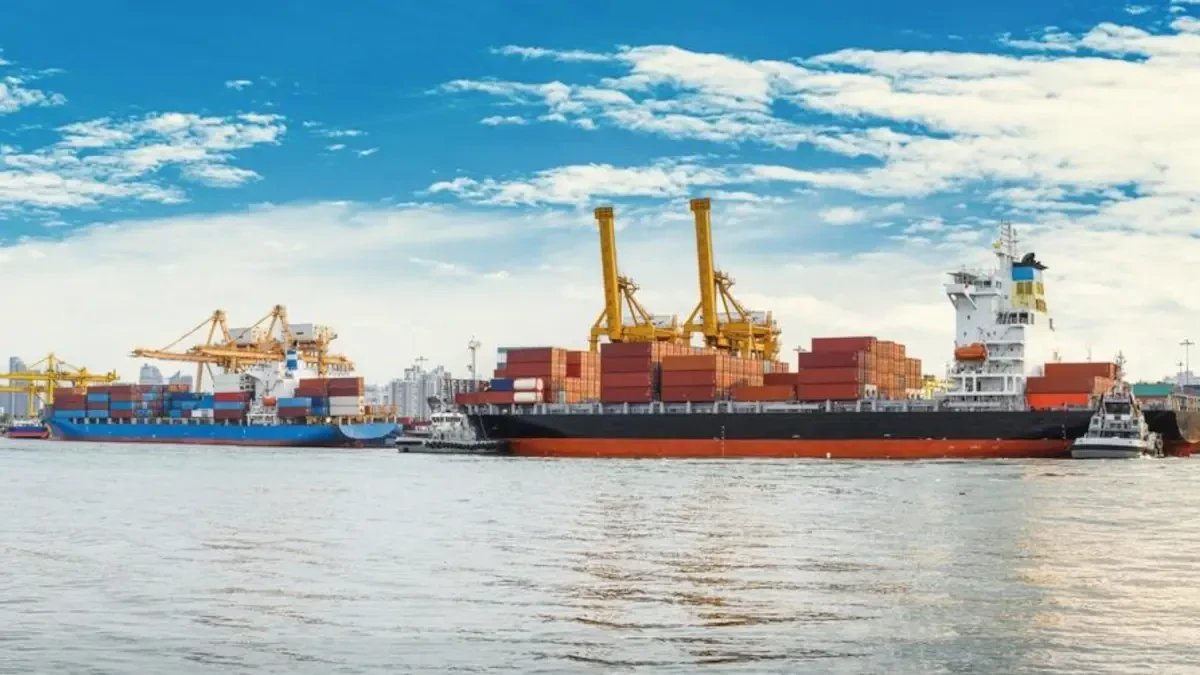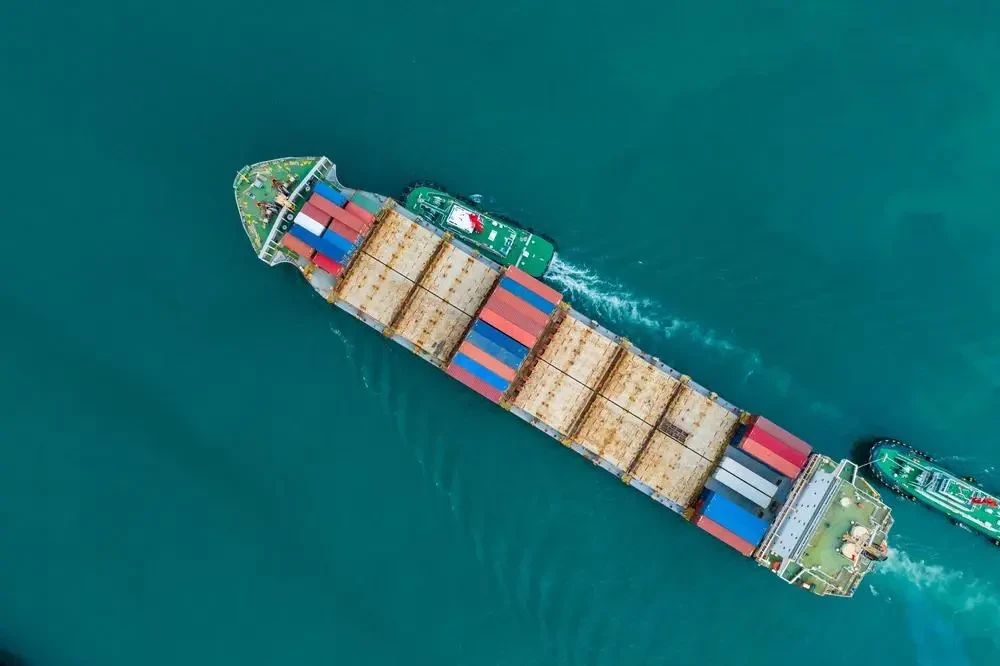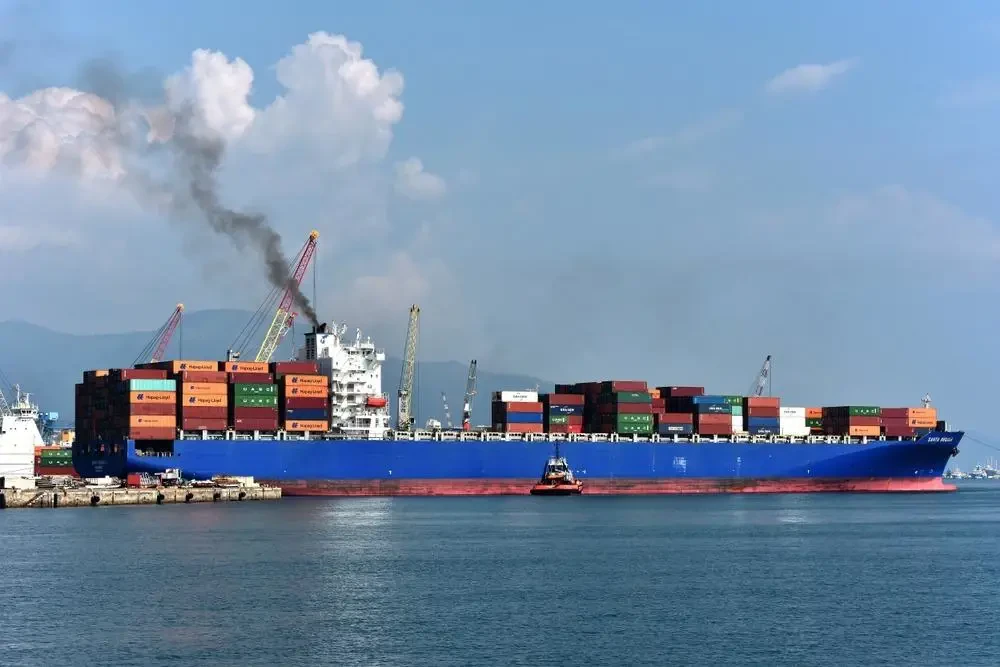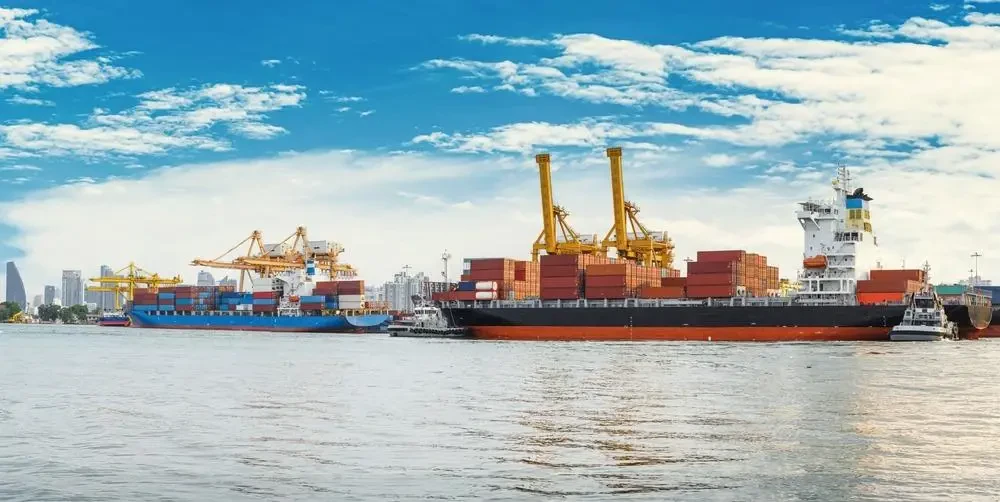Published by Chris Townsend
Last updated Dec, 21 2025

How Much Does Shipping a Container To Canada Cost?

Shipping a standard container to another country is an incredibly complex process with many moving pieces. You’ll want to work with a company experienced with this, like Three Movers. If you are shipping to Canada or other countries, we can help break down all the variables involved to ensure you make the right decisions. We can also take care of everything in your move so you don’t have to worry about anything.
Factors That Affect The Expense Of Logistics
Many different factors can affect the cost of shipping a container. However, five elements can be considered the most important. First, there’s the obvious factor of distance. The further away you are from dispatching something, the more it’ll command. Then, there are the charges related to the weight or volume of your freight. This will depend on the type of transportation method you choose to use. For instance, air freight focuses on weight, while sea cargo cares more about volume.
Another important factor is the transportation method itself. If the country is in the same landmass, you can ship by air, sea, or land using international moving pods. Each has different costs associated with it, with air freight being the more expensive but also the fastest.
Finally, you’ll have to consider the destination port and the time of the year. Depending on where you are shipping from and which part of Canada you are transferring.
You’ll use one of their five major supply chain ports. Whether your cargo arrives through the port of Montreal, Vancouver, Halifax, Saint John, or Prince Rupert, you’ll have to deal with taxes and other port service fees. The time of the year is an essential consideration because the increase in demand with peak season can translate into a higher average cost. The peak season is generally between August and October, depending on several factors.
Which Size Of Container Works Best For Me?
There are 16 different types of containers, but most of them are used for businesses or big companies. Most people use one of two: A 20ft or 40ft container. A 20ft has about 25-28cbm (cubic meters) of usable space, while a 40ft one has around 54-58cbm. The container size you should choose will depend on your household size. It can accommodate the contents of a three-bedroom home, with a 40ft container holding double that. If you are moving a car, the 20ft option can fit it, but it won’t fit much of anything else.
The two load options available to you are Full Container Load (FCL) and less than container load (LCL). Using a receptacle just for yourself is the most cost-effective choice. Completely packing it will also protect your belongings. For individuals who cannot fill a receptacle, LCL service is available. If you select this setting, you and other users will share the same storage space.

Average Container Shipping Rates Estimates

FCL is best for transporting lots of boxes, pallets, and anything that requires a full container haulage to Canada of up to 45,000 lbs.
Full Container Load (FCL) Shipping Rates | |
|---|---|
| 20 ft Container | $855 |
| 40 ft Container | $940 |

LCL is a more affordable way to transport less than container load shipments to Canada.
Less Than Container (LCL) Shipping Rates | |
|---|---|
| LCL | $36/CBM |
| Personal Effects | $330 |
| Household Goods | $385 |

International house moving to Canada services are quick, easy, and cheap.
International House Moving Costs | |
|---|---|
| Partial House (2000Lbs & Less) | $385 |
| 1 Bedroom (3850 Lbs) | $1530 |
| 2 Bedroom (4500 Lbs) | $1840 |
| 3+ Bedroom (8750 Lbs) | $1970 |

International auto transport services to Canada via RoRo and container ships. Ship cars, trucks, SUVs, ATVs, boats, RVs, and heavy equipment.
Container Car Shipping | |
|---|---|
| Sedan (Container) | $1750 |
| SUV (Container) | $1860 |
| Sedan via RORO | $735 |
| SUV via RORO | $795 |
Understanding the cost of shipping a container to Canada in 2025 is essential for businesses and individuals involved in international trade or an international move. Whether you're shipping goods from the United States, Europe, or the Asia Pacific region, various factors influence container shipping prices. From container size to the destination port, these variables play a crucial role in determining the total cost.
Canada's major ports, such as the port of Vancouver and the port of Montreal, serve as key hubs for global trade. With different shipping options available, including full container load and lcl shipping, navigating the shipping industry requires careful planning. This guide will explore the factors impacting the price of shipping while helping you choose the best option for your needs.
What Influences the Cost of Shipping a Container to Canada?
Key Factors Affecting Prices
The cost of shipping a container to Canada is influenced by multiple factors that vary depending on specific requirements and market conditions. One of the primary factors is the container size. Whether you choose a 20-foot container or a 40-foot container, the dimensions and capacity play a role in determining the price. A 40 foot container, for example, can accommodate a higher volume of goods, making it a better option for larger shipments, while a 20 foot container is ideal for smaller loads or personal effects.
Another major consideration is the mode of transport. Sea shipping remains one of the most cost-effective options for transporting goods to Canada, particularly for high volume shipments, but air cargo is an alternative for faster delivery. However, air transport is generally more expensive than sea shipping due to higher fuel costs and limited container capacity. Fuel prices and overall market conditions, such as supply chain demand and global trade fluctuations, also significantly impact shipping container prices.
The destination port in Canada also affects the price. Major ports like the port of Vancouver or the port of Montreal may have different port fees and handling costs, which are factored into the final price. Additionally, import duties and customs regulations at the destination port can add to the shipping container cost. The type of goods you are shipping, such as fragile or perishable items, may require additional services like cargo insurance services or specialized containers, which can influence the total cost.
Peak season shipping can also elevate prices due to increased demand within the shipping industry. Planning your shipment during less busy times of the year can help you avoid the most cost-intensive periods. By considering these factors, businesses and individuals can better anticipate the total cost of their shipments and make informed decisions.
Major Shipping Routes and Ports in Canada
Popular Canadian Ports
Canada is home to several major ports that serve as critical hubs for international trade. The port of Vancouver, located on the west coast, is one of the busiest and most important ports in North America. Its proximity to the Asia Pacific region makes it a popular choice for goods arriving from countries such as China, Japan, and South Korea. The port of Montreal, situated in eastern Canada, is another major hub, handling a significant volume of cargo from Europe and the United Kingdom.
The port of Toronto, while smaller in scale compared to Vancouver and Montreal, plays a crucial role in serving central Canada. This port is particularly useful for goods that need to be transported further inland. Additionally, the port of Prince Rupert on the west coast offers a strategic location for shipments coming from the United States, Asia, and other regions. These ports collectively form the backbone of Canada’s shipping infrastructure, ensuring the smooth movement of goods across the country.
Shipping from International Locations
Canada’s shipping industry is well-connected to international locations, providing various shipping options for businesses and individuals. From the United States, major hubs like New York, the US West Coast, and Long Beach are common origin ports for shipments heading to Canada. These routes are particularly beneficial for businesses engaged in cross-border trade, given the proximity and reduced transportation costs.
From Europe, the United Kingdom remains a key partner for Canadian imports, with goods often shipped via the port of Montreal. Similarly, the Asia Pacific region, including countries like China, South Korea, and Japan, relies heavily on the port of Vancouver for efficient trade. The Middle East is another growing trade partner, with goods often transported through Prince Rupert or Vancouver.
Other regions, such as Australia, New Zealand, and Costa Rica, also contribute to Canada’s global trade network. Depending on the origin port, the estimated transit time may vary, but Canada’s well-established shipping routes ensure reliable freight solutions for a wide range of goods. Whether you’re shipping a bedroom house worth of belongings or commercial cargo, selecting the right shipping mode and port of destination is essential for a seamless experience.

Understanding the cost of shipping a container to Canada in 2025 is essential for businesses and individuals involved in international trade or an international move. Whether you're shipping goods from the United States, Europe, or the Asia Pacific region, various factors influence container shipping prices. From container size to the destination port, these variables play a crucial role in determining the total cost.
Canada's major ports, such as the port of Vancouver and the port of Montreal, serve as key hubs for global trade. With different shipping options available, including full container load and lcl shipping, navigating the shipping industry requires careful planning. This guide will explore the factors impacting the price of shipping while helping you choose the best option for your needs.
What Influences the Cost of Shipping a Container to Canada?
Key Factors Affecting Prices
The cost of shipping a container to Canada is influenced by multiple factors that vary depending on specific requirements and market conditions. One of the primary factors is the container size. Whether you choose a 20-foot container or a 40-foot container, the dimensions and capacity play a role in determining the price. A 40 foot container, for example, can accommodate a higher volume of goods, making it a better option for larger shipments, while a 20 foot container is ideal for smaller loads or personal effects.
Another major consideration is the mode of transport. Sea shipping remains one of the most cost-effective options for transporting goods to Canada, particularly for high volume shipments, but air cargo is an alternative for faster delivery. However, air transport is generally more expensive than sea shipping due to higher fuel costs and limited container capacity. Fuel prices and overall market conditions, such as supply chain demand and global trade fluctuations, also significantly impact shipping container prices.
The destination port in Canada also affects the price. Major ports like the port of Vancouver or the port of Montreal may have different port fees and handling costs, which are factored into the final price. Additionally, import duties and customs regulations at the destination port can add to the shipping container cost. The type of goods you are shipping, such as fragile or perishable items, may require additional services like cargo insurance services or specialized containers, which can influence the total cost.
Peak season shipping can also elevate prices due to increased demand within the shipping industry. Planning your shipment during less busy times of the year can help you avoid the most cost-intensive periods. By considering these factors, businesses and individuals can better anticipate the total cost of their shipments and make informed decisions.
Major Shipping Routes and Ports in Canada
Popular Canadian Ports
Canada is home to several major ports that serve as critical hubs for international trade. The port of Vancouver, located on the west coast, is one of the busiest and most important ports in North America. Its proximity to the Asia Pacific region makes it a popular choice for goods arriving from countries such as China, Japan, and South Korea. The port of Montreal, situated in eastern Canada, is another major hub, handling a significant volume of cargo from Europe and the United Kingdom.
The port of Toronto, while smaller in scale compared to Vancouver and Montreal, plays a crucial role in serving central Canada. This port is particularly useful for goods that need to be transported further inland. Additionally, the port of Prince Rupert on the west coast offers a strategic location for shipments coming from the United States, Asia, and other regions. These ports collectively form the backbone of Canada’s shipping infrastructure, ensuring the smooth movement of goods across the country.
Shipping from International Locations
Canada’s shipping industry is well-connected to international locations, providing various shipping options for businesses and individuals. From the United States, major hubs like New York, the US West Coast, and Long Beach are common origin ports for shipments heading to Canada. These routes are particularly beneficial for businesses engaged in cross-border trade, given the proximity and reduced transportation costs.
From Europe, the United Kingdom remains a key partner for Canadian imports, with goods often shipped via the port of Montreal. Similarly, the Asia Pacific region, including countries like China, South Korea, and Japan, relies heavily on the port of Vancouver for efficient trade. The Middle East is another growing trade partner, with goods often transported through Prince Rupert or Vancouver.
Other regions, such as Australia, New Zealand, and Costa Rica, also contribute to Canada’s global trade network. Depending on the origin port, the estimated transit time may vary, but Canada’s well-established shipping routes ensure reliable freight solutions for a wide range of goods. Whether you’re shipping a bedroom house worth of belongings or commercial cargo, selecting the right shipping mode and port of destination is essential for a seamless experience.
Frequently Asked Questions
The cost of shipping a container to Canada typically ranges from $2,500–$6,500 for a 20ft container and $4,000–$9,000 for a 40ft container. Pricing is influenced by origin country, port pair, container size, fuel surcharges, and seasonal demand. Inland trucking, customs clearance, and final delivery can raise totals. Broader benchmarks are outlined in our international moving costs guide.
Container shipping rates are driven by container size, FCL vs LCL shipping, origin port, fuel and congestion surcharges, and final delivery distance. Canadian ports like Vancouver and Montreal experience seasonal congestion, especially in winter. Customs inspections, chassis shortages, and rail transfers can further increase the final container shipping cost beyond the base ocean rate.
FCL is generally cheaper per cubic foot for large shipments, while LCL works better for smaller volumes. FCL rates are charged per container, while LCL is billed per cubic meter with added consolidation fees. LCL shipments often take longer and cost more overall on long routes due to handling and warehouse charges.
Transit times average 10–18 days from the U.S., 20–35 days from Europe, and 30–45 days from Asia. Delays may occur due to customs clearance, port congestion, weather, and whether the shipment is FCL or LCL. Inland rail or truck delivery typically adds 2–7 days after port arrival.
Required documents include a commercial invoice, packing list, bill of lading, and cargo control document. Certain goods require permits under Canadian Border Services Agency rules. Errors or missing paperwork can cause inspections and storage fees. Many shippers reduce delays by working with providers offering international moving and storage support.
Yes. Customs duties, GST (typically 5%), and brokerage fees are added to container shipping costs based on cargo type and value. Personal household goods may qualify for duty exemptions, but inspections can still trigger fees. These charges are separate from ocean freight and should be budgeted upfront.
Marine insurance is strongly recommended and usually costs 1–3% of the declared cargo value. It covers damage, loss, theft, and weather-related incidents during ocean and inland transport. This is especially important for long routes using containers or pods. Cost protection details are explained in our moving overseas shipping costs resource.


